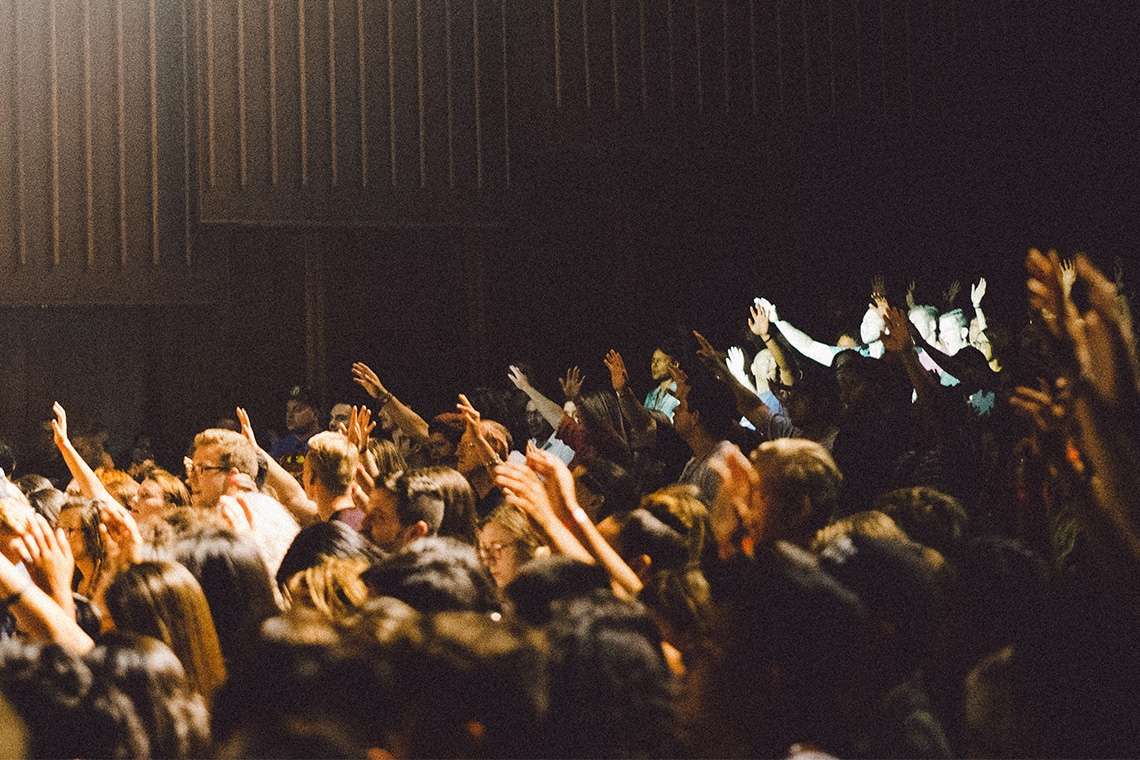Last month, BIM Coordinator Nick Arnold was invited to speak at the Heritage Ohio Quarterly Training hosted by Marietta Main Street. The all-day training, held at The Adelphia Music Hall on April 18th, and was attended by Main Street managers, elected officials, and community leaders from across the State of Ohio.
Nick commented on his experience that, “it was a super fun presentation and a great crowd! We spent hours discussing unique differences of various communities and what challenges they face with local property owners or other roadblocks.”
“Communities aren’t built by accident,” said Cristie Thomas, Executive Director of Marietta Main Street. “They are built with intent and guided by well-thought out, researched strategic planning efforts.” Discussion was focused on the role of design in downtown revitalization, with facilitated conversations on public art, outdoor recreation, and planning public space. Tying these topics together in a comprehensive overview, Nick’s presentation, titled Planning Public Spaces Like an Architect shared his top five considerations for downtown planning.
1. Recognize & Preserve Inherent Character
Part of planning successful downtown public spaces are taking cues from the region’s heritage. Celebrating where we came from and why we’re here as a community has to be the foundation for any effective planning exercise. This cultural narrative informs and guides the regional design vernacular throughout the generations and is unique to each and every Main Street Community. Artists and Entrepreneurs are what shape the local economies and interests. Without their passion and drive, communities lack flavor and dynamic movement in and around the technology, art and conversations that shape our communities today. Similarly, preserving the area’s historic integrity to continue telling these stories for generations to come demands a high priority from both public and private individuals as they go about building their businesses and making their creations. Embracing those unique characteristics of our historic downtowns is what gives Marietta its edge as a riverfront community and what draws so much tourism to our area each year.
2. Plan for All Kinds of People
Designing for various demographics is critical to designing public space to be used throughout the seasons. From weekend warriors to remote office workers, each group needs a place to “land” for either business or leisure. Our responsibility as community planners is to facilitate the designs that tailor spaces to each of these unique demographics while keeping an eye on seasonal conditions and other community events that will overlap these spaces throughout the year. Travel, outdoor recreation, restaurants, hobbyists, enthusiasts, the elderly, young families, artists, musicians, all of these groups and more want and need a place to experience our downtown community. The better we design spaces for these demographics to coexist in the same space, the higher the actual usage of the developed space and more likely our communities are to bond with one another as groups.
3. Prioritize Walkability & Wayfinding
Envisioning the events that the community wants to happen downtown is critical to executing this design effort. Close attention to details such as clear/concise signage, prioritizing people over parking, and integrating places to rest for young families and the elderly are at the core of developing public spaces in our historic downtowns. In parallel, focusing on street side safety by physically separating speed range hardscapes by planting and curbing ensures pedestrians and cyclists feel safe and welcomed into downtown spaces without the threat of fumes, rocks, or other envirnomental debris that can be stirred up by closely passing traffic.
4. Think in Different Scales
Considering thermal comfort & shading, planning for each season, and balancing greenspaces with hardscapes can lead to a more intimate experience at the pedestrian level as people pass between various sized buildings and public spaces. Designing features that engage the passerby provide interest and can be a way to draw crowds in and out of spaces during festivals and other events in our downtown spaces. It’s a constant challenge to design just enough space for function, without wasting a lot of real estate or other building materials/resources on areas too large to facilitate average demands, leading to wasted construction and maintenance efforts. Environmental conditions such as shade/shadow and wind tunneling from surrounding buildings or structures also need closely coordinated to provide the best comfort for patrons using these spaces throughout the year.
4. Use your Local Resources
Finally, engaging the community stakeholders such as city council, local institutions, nearby industry and other employers may uncover hidden needs for better public spaces and foster relationships that will go on to aid in the development and utilization of these downtown spaces, further bolstering community engagement. Additionally, leaning into the knowledge of code enforcement or other regional development authorities ensures buy in from those entities having jurisdiction. Turning to local funding sources and other community organizations may also help to flesh out public space planning efforts by collecting the various “customer data” from those who are close to the community volunteers planning and attending public events that can/do make use of these community spaces.
Bonus Topic: Employ Innovative Technologies
To finish the presentation, Nick reviewed some of the innovative technology that Pickering Associates is using right now to document and develop plans for outdoor spaces in both public and private sectors. These included 3D Scanning, Aerial Surveying/Drone Mapping, Digital Rendering & Visualization, Wind Analysis, Building Information Modeling (BIM), Building Performance Analysis (BPA), and ultimately Virtual Reality (VR) to ensure each community stakeholder has the proper information to give relevant input and help spread the word for better community buy-in.
The complete presentation can be viewed here: http://prezi.com/zl22sidmerby/?utm_campaign=share&utm_medium=copy&rc=ex0share
For more information on revitalization in Downtown Marietta, visit www.mariettamainstreet.org

